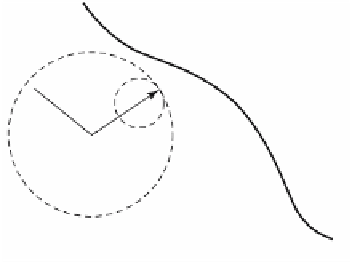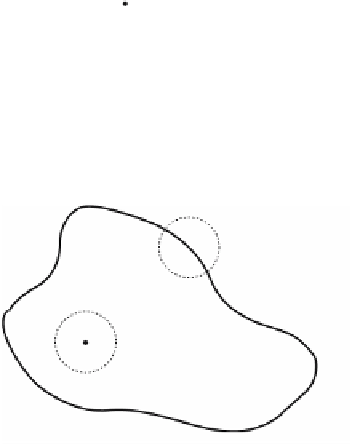Graphics Reference
In-Depth Information
is an open set. Let
p
Œ
Y
. See Figure 4.1. Since
p
œ cl(
X
), there is an e>0, so
that
B
n
(
p
,e) «
X
= f. To show that
B
n
(
p
,e) does not contain any limit point of
X
, let
q
Œ
B
n
(
p
,e) and let r =e-|
pq
|. Then
n
(
)
Õ
n
(
)
Õ-
n
Bq
,
r
Bp
,
e
R
X
,
so that
q
is not a limit point of
X
.
Let
X
Õ
R
n
. The
boundary
of
X
, denoted by bdry(
X
), is defined by
Definition.
bdry(
X
) = {
p
| every neighborhood
N
of
p
meets both
X
and its complement,
that is,
(
)
π
n
NX
«π
f
and
N R X
«
-
f
}.
The
interior
of
X
, denoted by int(
X
), is defined by
()
=Œ
{
}
int
XpXp
has a neighborhood
N
with
NX
Õ
.
See Figure 4.2. For example, if n = 1, then
(
()
)
=
{}
(
[]
)
=
()
bdry
01
,
01
,
and
int
01
,
01
,
.
Note that boundary points of a set do not necessarily belong to the set. The bound-
ary of the set of rationals in the reals is all of the reals and the interior of this set is
empty. For “nice” sets the boundary and the interior are the obvious sets; however,
B
n
(p,e)
X
q
e
p
r = e - |pq|
Y
Figure 4.1.
Proving that cl(
X
) is a closed set.
N
p
N
X
q
Figure 4.2.
A boundary point
p
and an interior point
q
of a set
X
.







